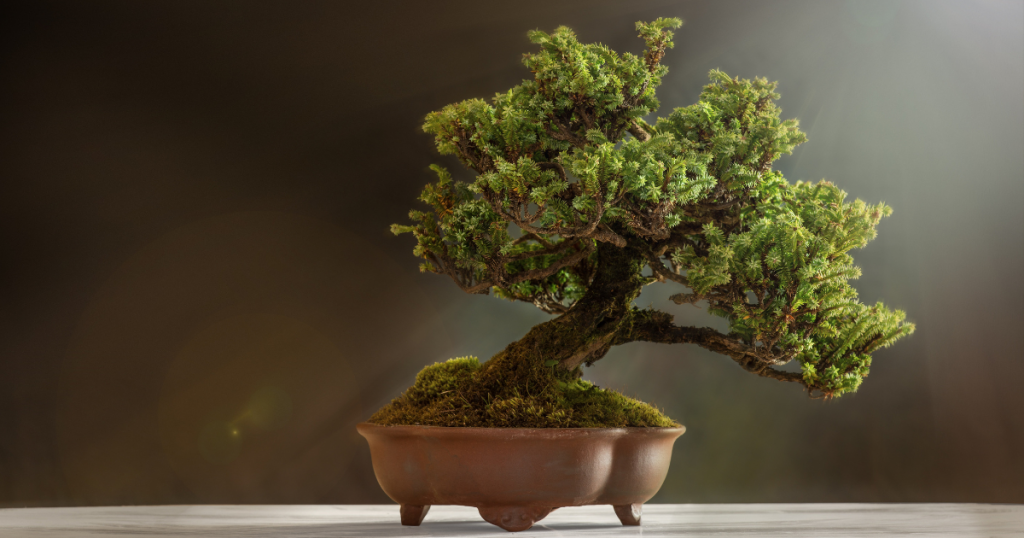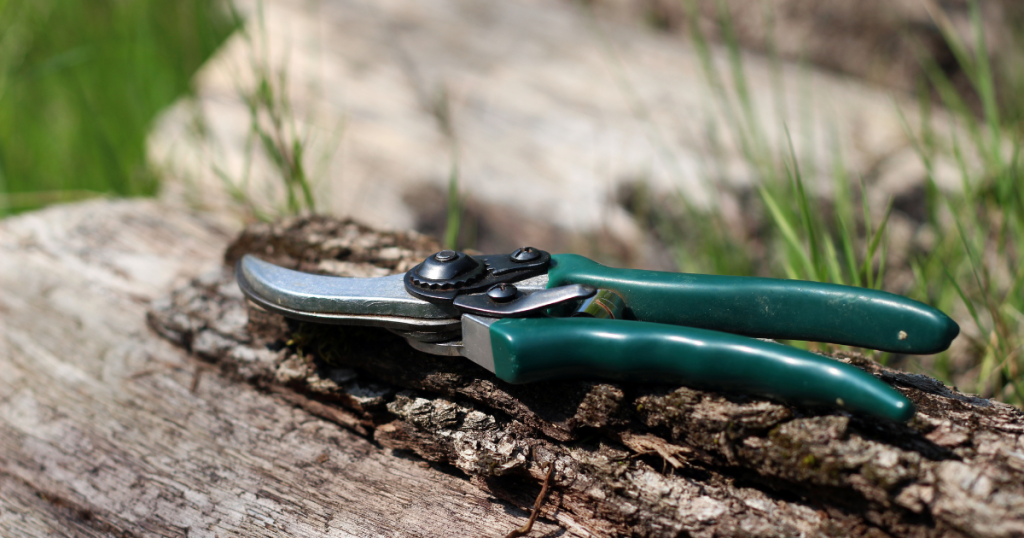
Bonsai trees are a beloved and iconic element of Asian culture, and for good reason. These miniature trees, which are trained and shaped over time to create a specific aesthetic, are not only beautiful to look at, but they also symbolize balance, harmony, and the natural beauty of the world. Growing bonsai trees is a popular hobby that allows you to create your miniature trees and bring a touch of tranquility and beauty to your home or outdoor space.
However, if you are new to bonsai, it can be intimidating to get started. There are many different types of bonsai trees to choose from, and each type has its specific care and training requirements. In addition, bonsai trees require a certain level of attention and care to thrive. If you are not sure where to start, it can be overwhelming.
But don’t worry! With a little bit of knowledge and the right tools, you can easily get started on your bonsai journey. In this blog, we will provide you with some tips and tricks to help you choose the right tree, understand the basic care requirements, and learn some advanced techniques for growing bonsai trees successfully. Whether you are an experienced gardener or a beginner looking to try something new, there is a bonsai tree that is right for you. So read on and get ready to start your bonsai journey today!
When it comes to growing bonsai trees, choosing the right tree is an important first step. Many different types of trees can be used for bonsai, and each type has its specific care and training requirements. Here are a few things to consider when choosing the right tree for your bonsai journey:
Climate: One of the most important things to consider when choosing a bonsai tree is the climate in which you live. Different trees are suitable for different climates, so it is important to choose a tree that will thrive in your specific area. For example, if you live in a warm climate, you may want to choose a tropical or subtropical tree such as a ficus or a jade plant. If you live in a cooler climate, you may want to choose a tree that is more tolerant of cold weather, such as a juniper or a pine.
Size: Bonsai trees are, by definition, miniature trees. However, they can still vary in size, and it is important to choose a tree that will be appropriate for the space you have available. If you have a small space, you may want to choose a smaller tree such as a Japanese maple or a dwarf pine. If you have a larger space, you may be able to accommodate a larger tree such as a Chinese elm or a Chinese juniper.
Style: Bonsai trees can be shaped and trained in a variety of different styles, each with its unique aesthetic. Some common bonsai styles include the formal upright style, the informal upright style, the slanting style, and the cascade style. Choose a tree that is compatible with the style you want to create. For example, if you want to create a formal upright bonsai, you may want to choose a tree with a straight trunk and symmetrical branches, such as a Japanese maple. If you want to create a cascade bonsai, you may want to choose a tree with long, flexible branches, such as a weeping willow.
By considering these factors, you can choose the right tree for your bonsai journey. With the right tree and a little bit of care and attention, you can create a beautiful and thriving bonsai that will bring a touch of beauty and tranquility to your space.

Growing bonsai trees requires a certain set of tools and equipment to be successful. While you can start with just a few basic tools, you may want to invest in additional equipment as you become more experienced and develop your bonsai skills. Here is a list of some of the basic tools and equipment you will need to get started growing bonsai trees:
Bonsai pot: A bonsai pot is a shallow container specifically designed for growing bonsai trees. These pots are typically made of ceramic or plastic and have drainage holes to allow excess water to drain away from the roots. When choosing a bonsai pot, consider the size of your tree and the style of pot that will best complement your tree’s aesthetic.
Bonsai soil: Bonsai trees have specific soil requirements to thrive. Bonsai soil is a specially formulated mix of ingredients that provides the proper balance of nutrients, drainage, and aeration for bonsai trees. You can purchase bonsai soil at a garden center or online, or you can make your mix using ingredients such as akadama, pumice, and lava rock.
Bonsai shears: Bonsai shears are small, sharp scissors specifically designed for trimming and shaping bonsai trees. These shears come in a variety of sizes and shapes, and you may want to invest in a few different pairs to suit different purposes. For example, you may want a pair of small, pointed shears for trimming small branches and a pair of larger, curved shears for shaping larger branches.
Bonsai wire: Bonsai wire is a thin, flexible wire that is used to shape and train bonsai trees. The wire is wrapped around the branches and trunk of the tree and is tightened over time as the tree grows, allowing you to shape the tree into your desired aesthetic. Bonsai wire comes in a variety of sizes and colors, and you will need different sizes depending on the size of your tree and the branches you are working on.
Other tools: In addition to these basic tools, you may want to invest in other equipment as you become more experienced with bonsai. For example, you may want to purchase a bonsai watering can or a bonsai spray bottle for watering your tree, or a bonsai turntable for easier access to all sides of the tree. You may also want to invest in a bonsai fertilizing kit to help ensure that your tree is getting the proper nutrients.
With these tools and equipment, you will have everything you need to get started growing bonsai trees. With a little bit of care and attention, you can create healthy and thriving bonsai trees that will bring a touch of beauty and tranquility to your space.
Growing bonsai trees requires a certain level of care and attention to thrive. While each type of tree has its specific care requirements, some basic care tips apply to all bonsai trees. Here are some tips to help you care for your bonsai tree successfully:
Water regularly: One of the most important things to remember when caring for a bonsai tree is to water it regularly. Bonsai trees have small pots and shallow root systems, which means they dry out quickly. Check the soil daily and water your tree as needed to keep it moist, but not waterlogged. You may want to invest in a bonsai watering can or spray bottle to make watering easier.
Fertilize regularly: Bonsai trees have specific fertilization requirements to thrive. Use a bonsai fertilizing kit or a balanced fertilizing solution to feed your tree according to the manufacturer’s instructions. Avoid over-fertilizing, as this can harm your tree.
Prune regularly: Pruning is an important part of bonsai care, as it helps to shape the tree and control its size. Use bonsai shears to trim and shape your tree according to your desired aesthetic. Be sure to sterilize your shears with rubbing alcohol before and after use to prevent the spread of the disease.
Repot regularly: Bonsai trees will eventually outgrow their pots and will need to be repotted to continue growing. Repot your tree according to the specific care requirements of your tree, using fresh bonsai soil and a slightly larger pot.
Protect from extreme temperatures: Bonsai trees are sensitive to extreme temperatures, so it is important to protect them from extreme heat or cold. In hot weather, provide your tree with shade and make sure it is well-watered. In cold weather, bring your tree indoors or provide it with a protective cover to keep it from freezing.
By following these basic care tips, you can create a healthy and thriving bonsai tree that will bring a touch of beauty and tranquility to your space. With a little bit of care and attention, you can enjoy the rewards of this rewarding and fulfilling hobby.
As you become more experienced with bonsai, you may want to try more advanced techniques to further shape and train your trees. Here are a few advanced bonsai techniques that you can try:
Wiring: Wiring is a technique used to shape and train bonsai trees by wrapping wire around the branches and trunk of the tree. The wire is tightened over time as the tree grows, allowing you to shape the tree into your desired aesthetic. Wiring can be a time-consuming process, but it is an effective way to shape and train your tree.
Defoliation: Defoliation is a technique used to thin out the leaves of a bonsai tree to create a more refined and aesthetically pleasing appearance. To defoliate a tree, simply remove a portion of the leaves using bonsai shears or your fingers. This technique can be stressful for the tree, so be sure to only defoliate a healthy tree and use caution when removing leaves.
Grafting: Grafting is a technique used to attach a piece of one tree to another to create new growth or change the shape of the tree. This technique is often used to create new branches or to add flowers or fruit to a tree. Grafting can be a complex and time-consuming process, and it requires a certain level of skill and experience.
Air layering: Air layering is a technique used to propagate bonsai trees by creating a new root system while the tree is still attached to the parent plant. To air layer a tree, you will need to make a small incision in the bark of the tree and cover it with a rooting hormone. Once the new roots have formed, you can cut the tree off from the parent plant and pot it up in its container.
These are just a few examples of advanced bonsai techniques that you can try as you become more experienced with this rewarding and fulfilling hobby. With a little bit of practice and patience, you can learn to shape and train your bonsai trees in a variety of ways, creating beautiful and unique miniature trees that will bring a touch of beauty
Growing bonsai trees is a rewarding and fulfilling hobby that allows you to create beautiful and unique miniature trees. With a little bit of knowledge and the right tools, you can easily get started on your bonsai journey. By following some basic care tips and learning some advanced techniques, you can create healthy and thriving bonsai trees that will bring a touch of beauty and tranquility to your space.
So why wait? Get started on your bonsai journey today and discover the joys of this rewarding and fulfilling hobby. Whether you are an experienced gardener or a beginner looking to try something new, there is a bonsai tree that is right for you. With a little bit of care and attention, you can create your own beautiful and unique bonsai trees that will bring a touch of culture and personality to your home or outdoor space.